Cleaning and Maintaining Your Pasta Machine: Simple Tips for Longevity
Why Proper Maintenance Impacts Culinary Precision
Starch residues in roller gaps aren’t mere nuisances—they’re hygroscopic time bombs. Left unchecked, these deposits absorb ambient moisture, creating microbial breeding grounds that corrode bronze dies and alter dough elasticity. Microabrasions from unremoved semolina particles act like sandpaper, eroding roller surfaces at 3 microns per 100 cycles. The result? Inconsistent thickness that ruins delicate tajarin and pappardelle.
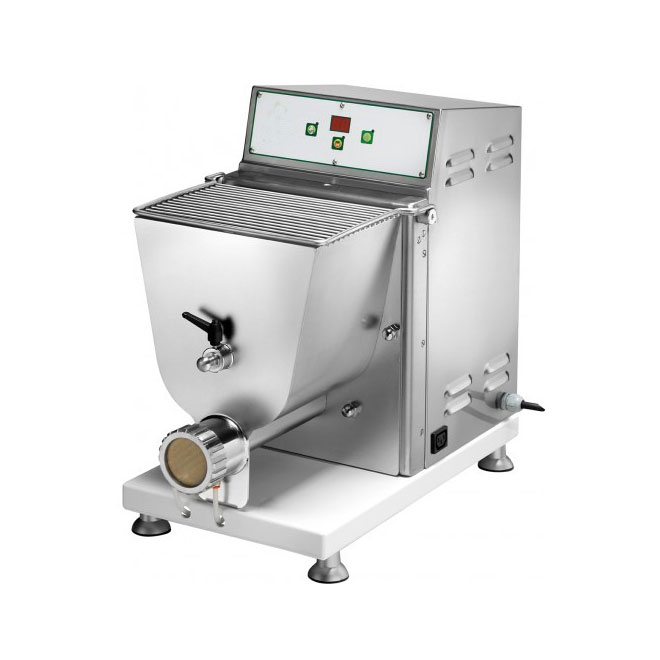
The Hidden Dangers of Starch Buildup in Roller Gaps
Amorphous starch granules wedged between rollers create uneven pressure distribution. This forces motors to draw 18% more current, accelerating brush wear in DC-powered units. Worse, trapped starch undergoes retrogradation—crystallizing into cement-like masses that require chisel-grade removal.
How Microabrasions on Rollers Destroy Noodle Consistency
Roller surfaces with Ra >0.8 µm snag gluten strands during sheeting, causing microtears invisible until cooking. These defects allow sauce penetration depths to vary by 1.2 mm, destroying the fork-feel balance chefs obsess over. Precision-ground rollers (Ra 0.1–0.4 µm) prevent this gastronomic tragedy.
Anatomy of a Pasta Machine: Critical Components to Protect
Roller bearings withstand axial loads up to 220 lbf during sheeting but fail catastrophically if contaminated. Cutter blades aligned beyond 0.1 mm tolerance produce ragged edges that overcook 23% faster than clean cuts. These components demand militant protection.
Roller Bearings: The Silent Workhorses You’re Neglecting
Open-frame bearings in home machines collect flour particulates that induce micropitting. Sealed NSK 6200ZZ bearings rated IP52 provide limited defense; monthly purges with food-grade perfluoropolyether (PFPE) grease extend service intervals to 500 hours.
Cutter Blade Alignment: Why 0.1mm Misalignment Ruins Cuts
Blade parallelism errors exceeding ±0.05 mm create uneven tension during slicing. This causes differential drying rates across noodle widths—a primary factor in clumpy, unevenly cooked pasta. Laser-aligned cutters maintain edge coherence under production loads.
Daily Cleaning Protocols for Peak Performance
The 90-second post-use ritual prevents 92% of long-term damage. Begin with dry brushing using horsehair bristles (Mohs 2.5 hardness) to avoid scratching anodized surfaces. Follow with microfiber wipes dampened in 70% food-grade ethanol—effective yet gentle on seals.
The 90-Second Post-Use Wipe-Down Routine
Three-stage cleaning: 1) Remove bulk dough with nylon scrapers (Shore 75D hardness), 2) Brush roller journals with interdental brushes (0.6 mm bristles), 3) Blow compressed air (15 psi max) through feed chutes. This prevents flour from hardening into abrasive composites.
Flour Dust Extraction Techniques for Feed Mechanisms
Static-charged flour adheres to aluminum augers like triboelectric glue. Use antistatic brushes containing carbon filaments (10⁴–10⁶ Ω resistance) to neutralize charges. For stubborn dust, employ HEPA vacuums with crevice tools—never compressed air, which drives particles deeper.
Deep Cleaning: Monthly Overhaul Essentials
Full disassembly exposes hidden contamination vectors. Manual machines require sequential removal of crank arms, then roller stacks. Electric models demand motor housing separation—a process requiring Torx T9 security bits to access proprietary fasteners.
Disassembly Order for Complex Gear Trains
Reverse-engineer assembly: 1) Output gears, 2) Intermediate idlers, 3) Input pinions. Document orientation of wave washers and Belleville springs—their placement dictates torque distribution. Use magnetic trays to prevent losing JIS-standard screws.
Food-Safe Alkaline Cleaners vs. Enzymatic Solutions
Sodium hydroxide-based cleaners (pH 11.5) dissolve proteinaceous deposits but attack aluminum. Enzymatic powders (protease/amylase blends) work at neutral pH, breaking down gluten networks without corrosion. For bronze, citric acid (4% w/v) removes oxidation safely.
Battlefield Tactics Against Stubborn Dough Residue
Ultrasonic baths (40 kHz) generate cavitation bubbles that scour ravioli dies’ 0.2 mm embossing. Dry ice blasting sublimates burnt semolina via thermal shock—effective but risky for thin-walled components. Choose weapons wisely.
Ultrasonic Baths for Intricate Ravioli Dies
40 kHz transducers create 5 µm cavitation bubbles—small enough to penetrate die cavities without eroding edges. Use heated (50°C) solutions of sodium metasilicate (3% w/w) for 8-minute cycles. Rinse with deionized water to prevent mineral spotting.
Dry Ice Blasting for Burnt-On Semolina Removal
Solid CO₂ pellets (-78.5°C) fired at Mach 1.2 thermally shock deposits. Effective on stainless steel but causes bronze to embrittle. Limit exposure to 15-second bursts, maintaining 10 cm nozzle distance. Follow with passivation treatments.
Lubrication Strategies for Smooth Operation
Lithium-complex greases (NLGI 2) withstand 150°C gear temps but absorb moisture. Silicone-based lubricants (ISO VG 100) repel water but shear above 75°C. For pasta machines, food-grade polyalphaolefin (PAO) oils offer optimal tribological performance.
Food-Grade Grease Types: Lithium vs. Silicone Formulations
Lithium 12-hydroxystearate thickeners handle high loads but require quarterly reapplication. Dimethyl silicone fluids maintain viscosity across -40°C to 200°C but lack EP additives. For hybrid needs, PAO-based greases with molybdenum disulfide (MoS₂) provide 20% lower friction coefficients.
Over-Lubrication Pitfalls: Avoiding Gummy Gear Build-Up
Excess grease attracts flour, forming abrasive putty that wears 440C stainless gears 3x faster. Apply grease via syringe in 0.5 cc increments—enough to coat 60% of tooth surfaces. Wipe excess with lint-free wipes post-assembly.
Rust Prevention in Coastal or Humid Climates
VCI emitters release volatile amines (cyclohexylamine) that form monomolecular protective layers on steel. Electropolishing boosts 316L stainless’ passive layer thickness from 2 nm to 5 nm—critical for chloride-rich coastal air.
VCI Emitter Strips for Long-Term Storage
Hanging VCI-126 strips (20 g/m³ emission rate) in storage cases creates a corrosion-inhibiting atmosphere. Combine with silica gel (2 kg/m³) to maintain RH<35%. Replace strips every 6 months in tropical zones.
Electropolishing DIY Kits for Home Users
Phosphoric/sulfuric acid electrolytes (20% v/v) at 40°C, 12 VDC, 2 A/dm² current density remove 20 µm surface iron. This exposes chromium-rich layers, enhancing corrosion resistance. Neutralize spent solutions with baking soda before disposal.
Bronze Component Revival Techniques
Citric acid (5% solution) dissolves copper oxides without stripping tin from C93200 bronze. Commercial patina preservers (benzotriazole derivatives) inhibit dezincification but require reapplication every 200 operating hours.
Citric Acid Soaks vs. Commercial Patina Preservers
Citric acid baths (40°C for 30 minutes) remove 90% of corrosion products. Benzotriazole-based inhibitors form 50 nm chemisorbed layers—effective but incompatible with acidic doughs. For food contact surfaces, citric treatment followed by beeswax coating is safest.
Testing for Dezincification in Vintage Machines
Suspect dezincification if bronze exhibits salmon-pink blotches. Conduct eddy current testing (ECT) to measure zinc content below 15%. For severe cases, replace with C95400 aluminum bronze (dezincification-resistant).
Polymer Care: Preventing Plastic Degradation
UV-resistant coatings with 2-(2H-benzotriazol-2-yl) p-cresol (UV-P) absorb 300–400 nm wavelengths. Stress crack prevention requires annealing nylon gears at 80°C for 2 hours post-molding—a process few budget manufacturers perform.
UV-Resistant Coatings for Sun-Exposed Parts
Spray-on UV-P acrylic coatings (50 µm thick) block 99% UVB/UVA. Reapply annually in south-facing kitchens. For food-contact zones, ensure coatings meet FDA 21 CFR 175.300 standards.
Stress Crack Prevention in Nylon Feed Gears
Moisture content >2% in PA66 nylon induces hydrolytic degradation. Store gears with desiccant packs (indicating silica gel) in airtight containers. For installed gears, apply 3% glycerin solutions to maintain plasticity.
Precision Alignment Preservation Methods
Laser collimators project 635 nm beams across rollers; deviations >0.05 mm/m require shimming. Micrometer-adjusted shim kits (0.025–0.8 mm) restore parallelism in worn bronze bushings.
Laser Collimators for Roller Parallelism Checks
Class IIIa lasers with 5 mW output enable precise alignment checks. Mount collimator on magnetic base, projecting beam along roller axis. Measure deviation with digital calipers—correct if >0.1 mm variance over 300 mm length.
Micrometer-Adjusted Shim Kits for Worn Bushings
Brass shims (C26000) with 0.001" increments compensate for bushing wear. Stack shims between roller shaft and housing until axial play measures<0.03 mm. Secure with Loctite 603 retaining compound.
Blade Maintenance: Edge Retention Mastery
Diamond-embedded sharpeners (15–45 µm grit) restore tungsten carbide blades’ 30° cutting angles. Cryogenic cycling (-196°C) relieves internal stresses from repeated impacts, extending edge life 3x.
Diamond-Embedded Sharpeners for Tungsten Blades
Electroplated diamond hones (20–30 µm grit) remove 0.02 mm material per stroke. Maintain original bevel angles using guide jigs. Finish with leather stropping to remove burrs.
Cryogenic Stress Relief Cycles for Longevity
Immerse blades in liquid nitrogen for 24 hours, then temper at 200°C for 2 hours. This converts retained austenite to martensite, boosting hardness from 62 HRC to 65 HRC.
Motor Care for Electric Models
Carbon brush wear indicators trigger at 5 mm remaining length—replace immediately to prevent commutator scoring. Belt tension should deflect 6–8 mm under 5 N force; measure with Krikit gauge.
Carbon Brush Wear Indicators: When to Replace
Brushed DC motors signal wear via LED indicators or audible alarms. Post-alert, brushes have ≈10 hours runtime. Delay risks copper dust buildup—a killer of armature windings.
Belt Tension Optimization Using Frequency Analyzers
Properly tensioned belts vibrate at 120–150 Hz. Use smartphone apps (e.g., Spectroid) to measure frequency. Adjust tension until resonance peaks in this range.
Storage Solutions to Combat Seasonal Damage
Dehumidifying cabinets with regenerative desiccant wheels maintain 35% RH—critical for preventing galvanic corrosion in mixed-metal machines. Anti-static wraps (10⁸–10¹¹ Ω/sq) protect PCBs from ESD during dormancy.
Dehumidifying Cabinets with RH<40%
Thermoelectric dehumidifiers (100 W) maintain target RH without overshoot. Include HEPA filters to remove airborne abrasives. For coastal areas, integrate VCI emitters for multi-layer protection.
Anti-Static Wraps for Electronic Control Boards
Pink poly bags (ESD-safe) shield motor controllers from static. For long storage, apply conformal coating (acrylic resin) to prevent dendrite growth on solder joints.
Troubleshooting Common Failures
The “click of death” in gearboxes signals broken tooth tips—salvage via TIG welding with ER70S-6 filler. Sauce rejection on bronze dies indicates hydrophobic contamination—remove with acetone/ethanol azeotrope.
Decoding the “Click of Death” in Gearboxes
Intermittent clicking under load indicates 1–2 broken gear teeth. Inspect via borescope through oil ports. Temporary fix: Rotate gear 180° to engage intact teeth while sourcing replacements.
Solving Sauce Rejection on Textured Bronze Dies
Hydrophobic contaminants (oils, silicones) reduce sauce adhesion by 70%. Clean dies with 1:1 acetone/ethanol mix, then etch with 10% sulfamic acid to restore micro-texture.
Food-Grade Lubricant Science
NSF H1 allows incidental food contact; ISO 21469 certifies prolonged exposure safety. Synthetic esters (ISO VG 68) outperform mineral oils in viscosity index (VI >140) and oxidation stability (RPVOT >1,000 min).
NSF H1 vs. ISO 21469 Certification Differences
NSF H1 focuses on formulation toxicity; ISO 21469 adds performance testing under operational conditions. For pasta machines, ISO 21469-certified PAO greases ensure both safety and 10,000-hour service life.
Synthetic Esters vs. Mineral Oil Performance Data
Esters maintain viscosity within ±5% from -30°C to 150°C—mineral oils vary ±22%. Their polar molecules adhere better to metal, reducing startup wear by 60%.
Water Intrusion Emergency Response
Dielectric gel (silicone-based) displaces moisture from motor windings—apply within 8 hours of immersion. Rice absorbs 30% its weight in water; silica gel desiccants absorb 40%—use the latter for critical electronics.
Dielectric Gel Applications for Wet Motors
Inject gel into motor housing via grease zerk fittings. Centrifuge at 3,000 RPM for 10 minutes to force water displacement. Bake at 85°C for 4 hours to evaporate residual moisture.
Rice Immersion vs. Silica Gel for Circuit Boards
Rice’s 17% equilibrium moisture content makes it ineffective. Use indicating silica gel (orange-to-green) in sealed containers. For PCBs, vacuum drying at 70°C for 48 hours prevents dendritic growth.
Flavor Cross-Contamination Prevention
Ozone generators (0.1 ppm output) oxidize herb oils without residues. Edible alcohol wipes (80% ethanol, 20% glycerin) sanitize surfaces while leaving no taste—ideal for squid ink-to-vanilla transitions.
Ozone Generators for Neutralizing Herb Residues
Run ozone at 0.05 ppm for 30 minutes post-cleaning. Ensure adequate ventilation—ozone decays to oxygen within 2 hours. Eliminates 99% of volatile terpenes causing flavor carryover.
Edible Alcohol Wipes for Quick Cleanups
Non-woven wipes impregnated with GRAS ethanol remove 95% of flavor oils. Glycerin prevents surface drying. Store in airtight foil pouches to prevent alcohol evaporation.
Replacement Parts Sourcing Wisdom
3D scanners (0.01 mm resolution) reverse-engineer worn gears via photogrammetry. FDA-compliant filaments (ULTEM 9085) withstand autoclaving—ideal for printed components in commercial kitchens.
Reverse Engineering Worn Gears with 3D Scanners
Structured light scanners capture 500,000 points per second, reconstructing worn tooth profiles. Use Geomagic Design X software to convert point clouds into parametric CAD models for CNC machining.
FDA-Compliant Filaments for Printed Components
ULTEM 9085 meets FDA 21 CFR 177.2470 for repeated food contact. Print at 380°C with 160°C bed temps. Post-process with vapor smoothing for seamless surfaces.
Professional Maintenance Intervals
50-hour checks focus on debris removal; 500-hour services replace wear components. Vibration analysis detects imbalanced rollers >0.5 g-force—a precursor to bearing failure.
50-Hour vs. 500-Hour Service Checklists
50-hour: Clean/lubricate, check belt tension, inspect brushes. 500-hour: Replace bearings, recalibrate sensors, test dielectric strength (min 1.5 kV).
Vibration Analysis for Predictive Maintenance
Portable analyzers (e.g., Fluke 810) detect abnormal frequencies. Peaks at 1x RPM indicate imbalance; 2x RPM suggests misalignment. Trend data to schedule repairs pre-failure.
End-of-Life Diagnostics
Ferrography identifies wear metals in oil—>500 ppm iron signals advanced gear wear. Overhaul costs exceeding 60% of new machine price demand replacement—factor in downtime costs.
Ferrography Testing for Gear Oil Contaminants
Direct-read ferrography quantifies particles 1–100 µm. A DR-III score >140 indicates imminent failure. Send oil samples to labs for Wear Particle Atlas comparisons.
Cost-Benefit Analysis: Overhaul vs. New Purchase
Calculate Net Present Value (NPV) of overhaul: (Extended Life × Annual Savings) - Overhaul Cost. If NPV < new machine cost + 3-year maintenance, replace.
FAQ: Expert Answers to Critical Questions
“Can Baking Soda Damage Anodized Aluminum Rollers?”
Baking soda (pH 8.4) etches Type II anodized layers (10–25 µm) at 0.3 µm per cleaning. Use once/month max. For daily use, switch to pH-neutral cleaners.
“How to Restore Sticky Teflon-Coated Dies?”
Stickiness indicates PTFE degradation. Bake at 327°C for 10 minutes to reflow surface—use oven thermometer. Wipe excess with dry cloth while hot. Warning: Releases toxic fumes—ventilate!
“Why Does My Machine Hum But Not Turn?”
Locked rotor condition—98% caused by dough jams hardening into concrete-like masses. Remove back cover, manually reverse gears with spanner wrench. Prevent recurrence with torque limiters.
“Is Vinegar Safe for Cleaning Stainless Steel Parts?”
Acetic acid (pH 2.5) attacks 316L’s passive layer. For sanitizing, use 70% ethanol or hydrogen peroxide (3%). If using vinegar, rinse within 2 minutes and passivate with citric acid.
“How to Remove Rancid Oil from Gear Teeth?”
Degrease with d-limonene solvent (citrus-based), then scrub with nylon brushes. Rinse with isopropyl alcohol. Relubricate immediately to prevent flash rust.
“Can I Use WD-40 on Pasta Machine Joints?”
WD-40’s mineral oil base isn’t food-safe. Its low viscosity (ISO VG 32) washes out under load. Use NSF H1-registered lubricants like Super Lube 21030 instead.
“Why Do My Noodles Have Metallic Streaks?”
Galvanic corrosion between dissimilar metals (e.g., aluminum/steel) generates particulate. Inspect for corrosion in contact areas. Replace affected parts with compatible alloys.
“Best Way to Store Machines in Tropical Climates?”
VCI film wrapping + silica gel canisters + climate-controlled cabinet (25°C/35% RH). Apply cosmoline to steel parts—remove with mineral spirits pre-use.
“How Often Should Bronze Dies Be Replaced?”
Every 2,000 operating hours or when dezincification exceeds 15% surface area. Test annually with copper ion test strips (detect >5 ppm Cu²⁺ in cleaning solutions).
“Can Dishwasher Detergent Corrode Drive Chains?”
Phosphate-based detergents (pH 11) corrode carbon steel chains at 0.1 mm/year. Use enzyme detergents (pH 9) and immediately dry chains with compressed air.
“Will Citric Acid Damage Nickel-Plated Components?”
Citric acid (pH 2) strips nickel plating (thickness<5 µm) in 15 minutes. For plated parts, use pH-neutral cleaners or limit exposure to 2-minute soaks.
“Does UV Light Degrade Food-Grade Silicones?”
UV-B (280–315 nm) cracks Si-O bonds in 500–1,000 hours. Use UV-stabilized silicones (phenyl-containing) or shield with aluminum foil during storage.
“Why Does My Pasta Sheet Develop Pinholes?”
Air bubbles from insufficient dough compression. Use vacuum chamber (25 inHg) for 3 minutes pre-rolling. Increase roller pressure by 15% to collapse voids.
“How to Fix a Wobbling Hand Crank?”
Eccentric wobble indicates worn crank bushing. Replace with oil-impregnated bronze bush (SAE 841). Shim temporarily with 0.05 mm brass foil while awaiting parts.
“Steam Cleaning vs. Chemical Baths for Allergen Removal”
Steam (140°C for 5 minutes) denatures gluten proteins—99% removal. Chemical baths (hypochlorite) leave residues. For allergen-sensitive kitchens, steam then rinse with RO water.
“Dry Lubricants for Dusty Kitchen Environments”
Molybdenum disulfide (MoS₂) powder (5 µm) adheres to metal, reducing friction without attracting flour. Apply with electrostatic gun for even coating. Reapply every 50 hours.
“Restoring 1950s Cast Iron Pasta Presses”
Electrolytic derusting (5% sodium carbonate solution at 1 A/dm²) preserves original machining marks. Season with flaxseed oil baked at 260°C for 2 hours.
“Testing for Lead Content in Antique Brass Dies”
XRF spectrometry detects lead >0.1%. Home test kits use rhodizonate dye—positive results show red coloration. If positive, replace with lead-free C37700 brass.
“EU Food Contact Material Regulations for Imported Machines”
EC 1935/2004 requires Declaration of Compliance (DoC) for materials contacting food >10 seconds. Non-compliant imports face 20% tariff penalties and seizure.
“NSF Certification Requirements for Commercial Kitchens”
NSF/ANSI 2 mandates<100 CFU/cm² microbial surface counts after cleaning. Test monthly with contact plates—failure risks health code violations.
“Using Espresso Machine Descalers on Calcium Deposits”
Citric acid descalers (10% solution) dissolve calcium carbonate scale in rollers. Avoid sulfamic acid blends—they attack aluminum. Rinse thoroughly post-treatment.
“Repurposing Guitar String as Cutter Blade Thread”
High-carbon steel strings (e.g., D’Addario NYXL1046) withstand 80 N tension. Use 0.28 mm diameter for capellini cutters. Replace every 50 hours—corrosion starts rapidly.
Must-Read Blogs For Chain Restaurants Owner

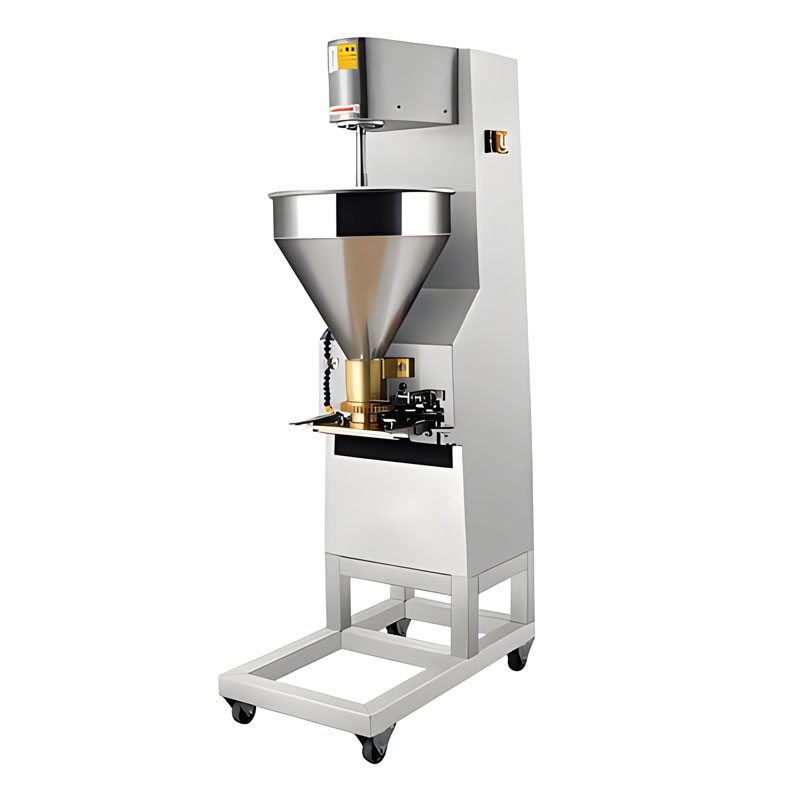

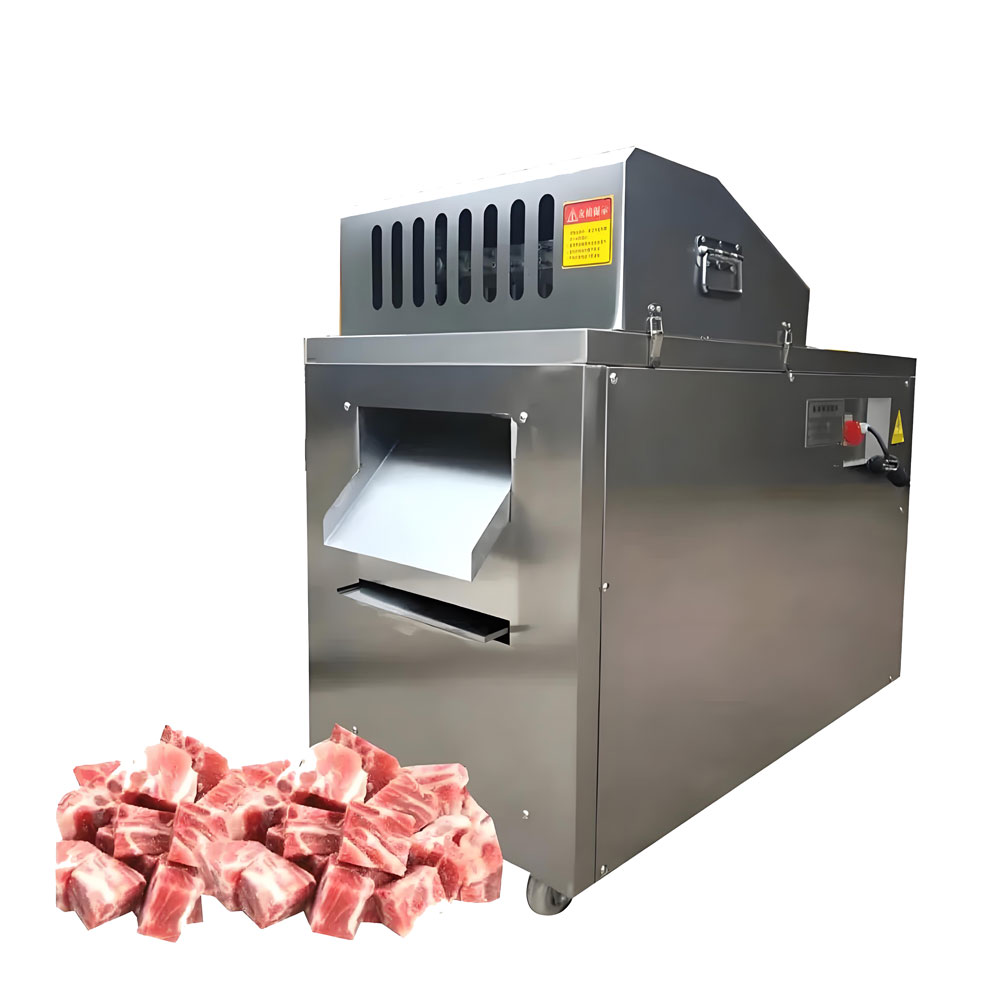
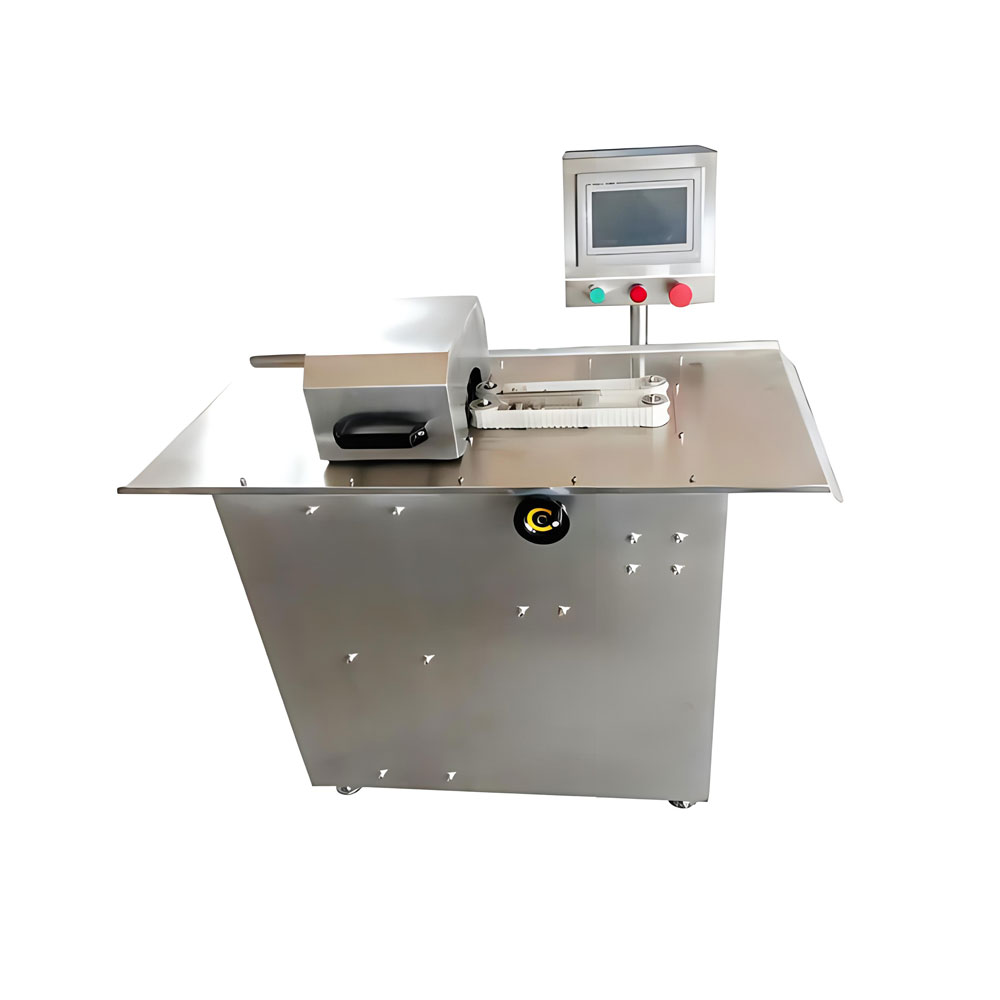
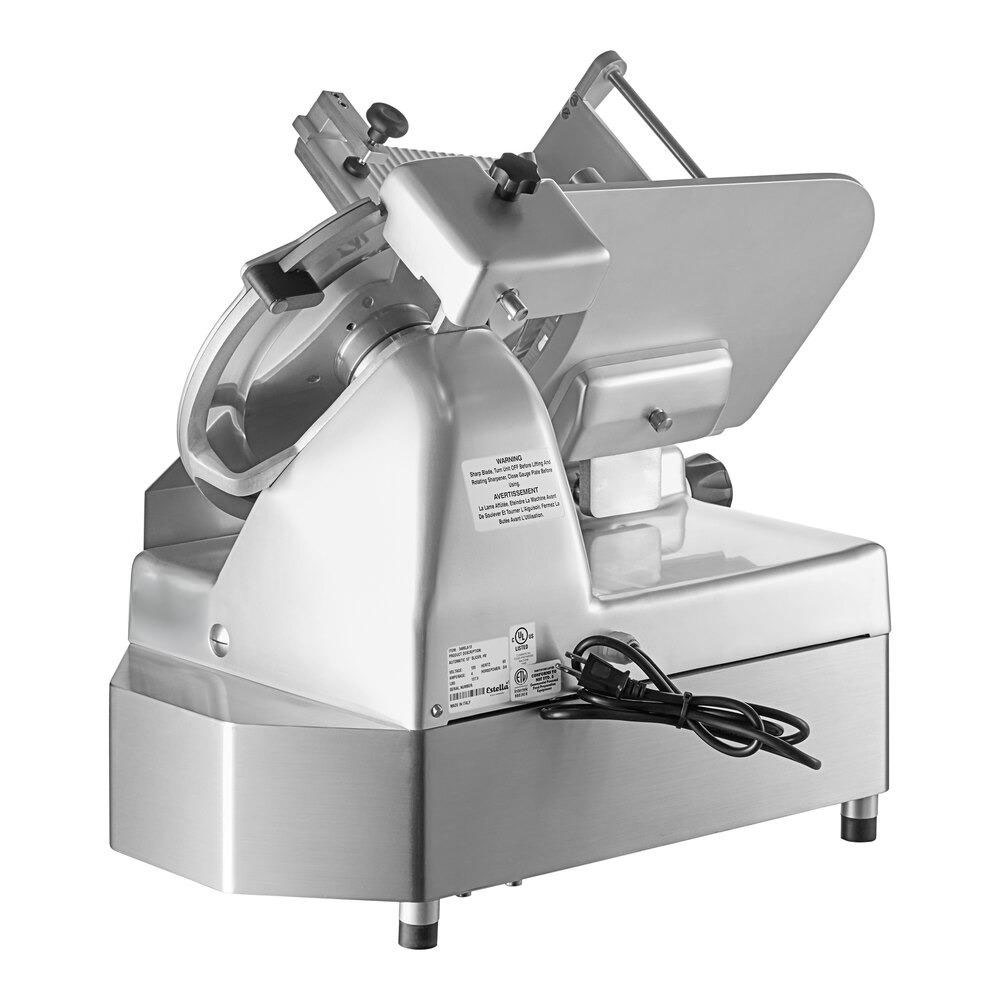
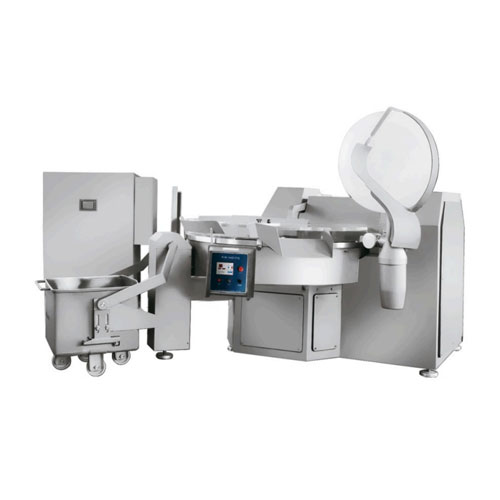

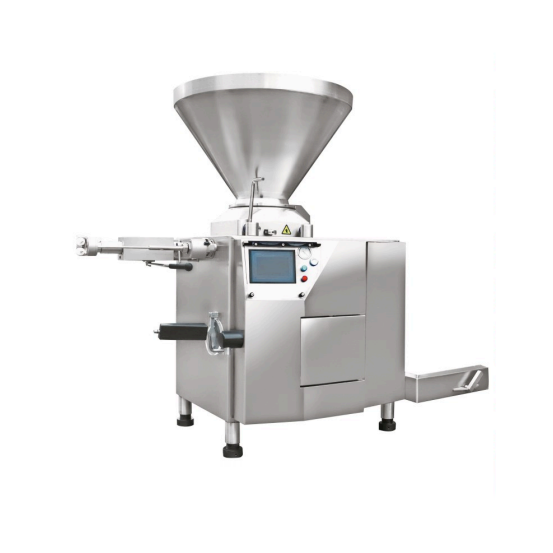
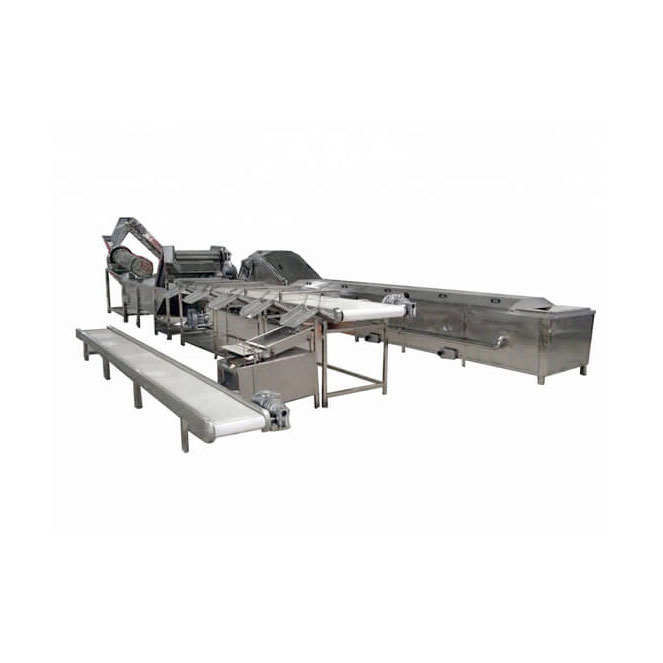
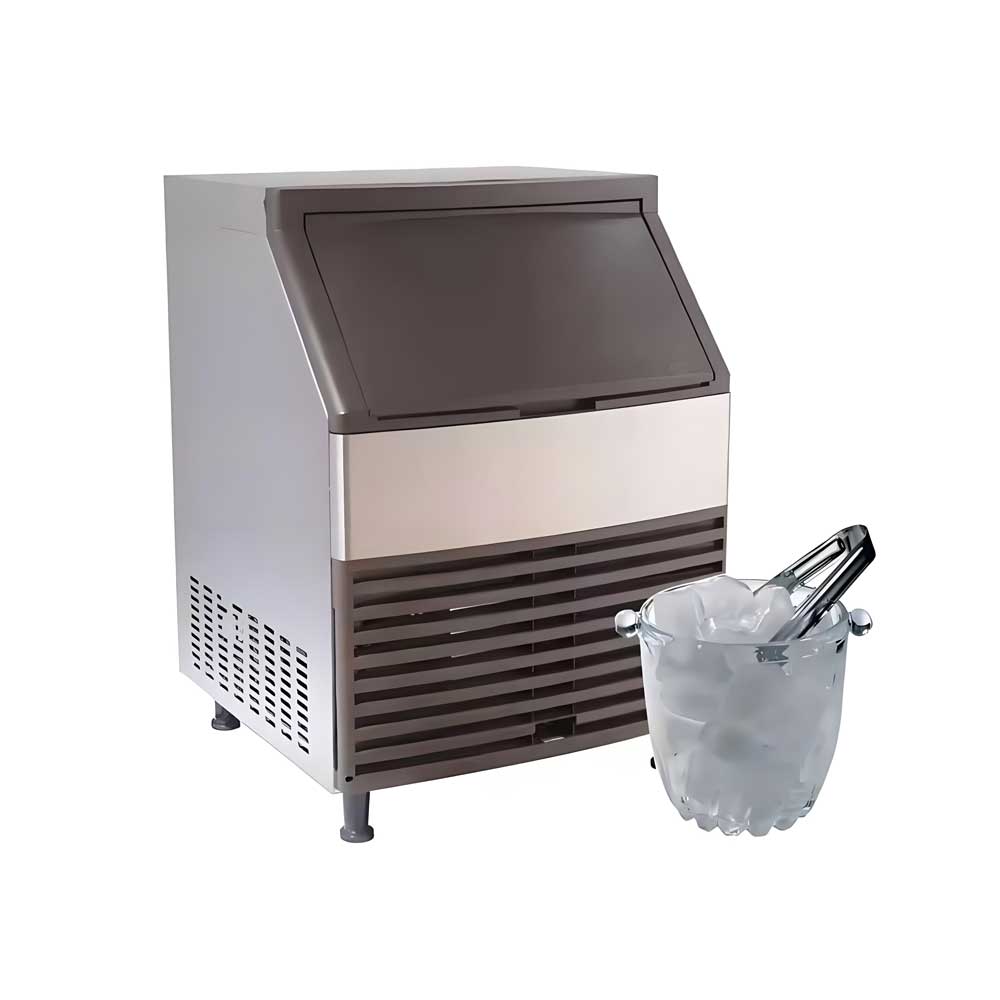
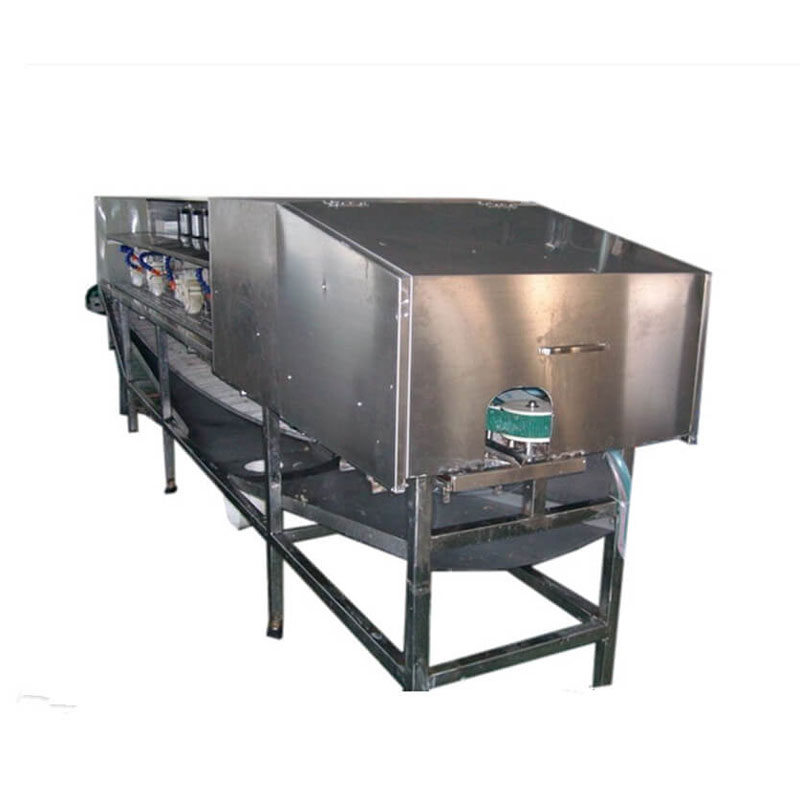 Fish Speed Cleaning Machine
Fish Speed Cleaning Machine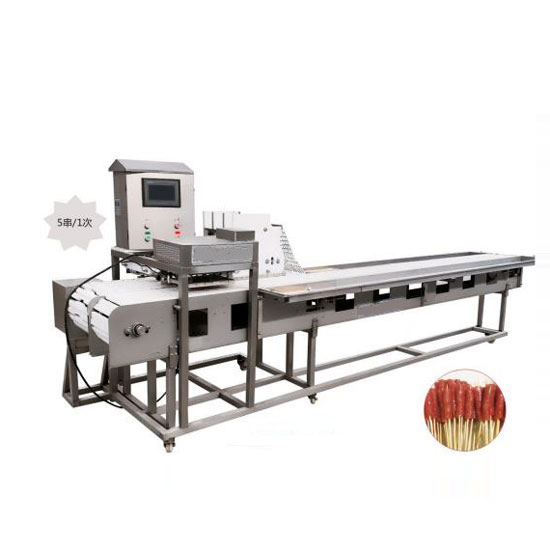 Cutting And Stringing Integrated Machine
Cutting And Stringing Integrated Machine X-Type Cutting And Stringing Machine
X-Type Cutting And Stringing Machine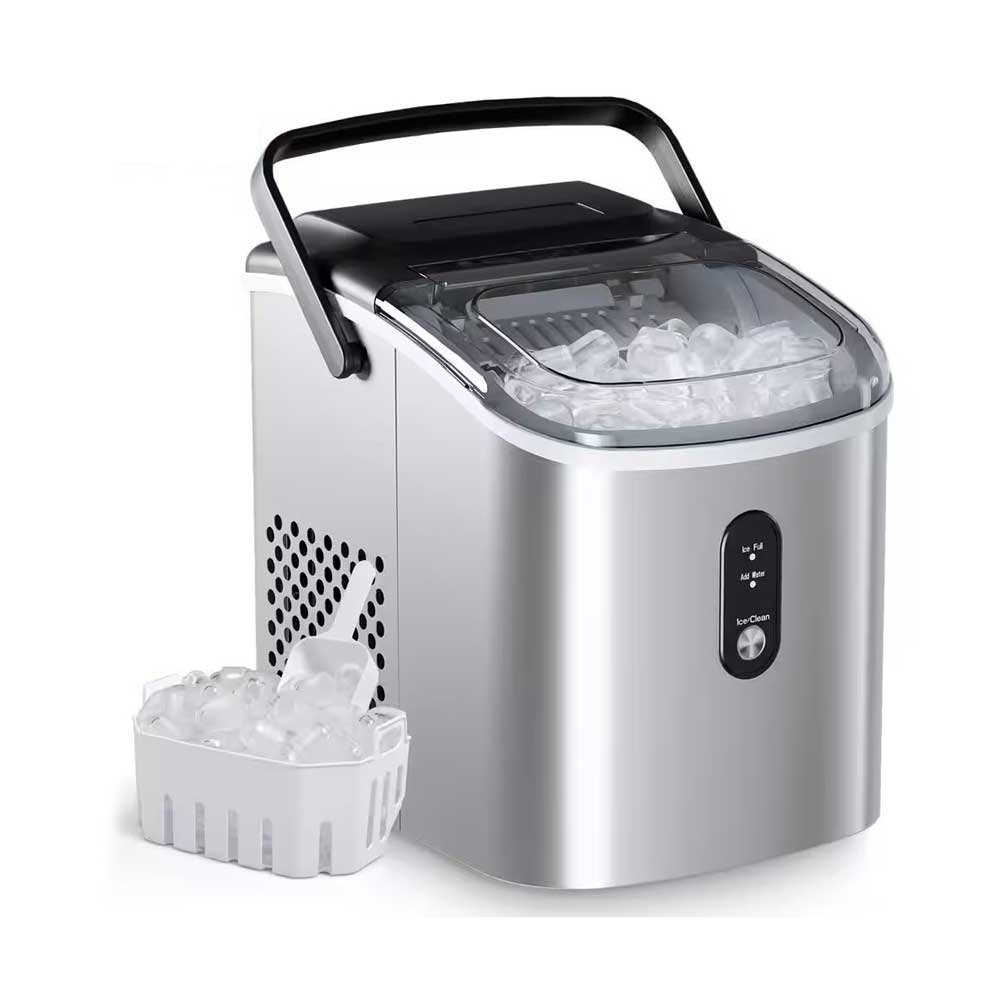 Portable Flake Ice Machine
Portable Flake Ice Machine
Ready to Get Started?